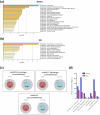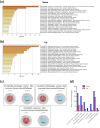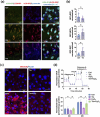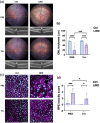Age-Associated Decline in Autophagy Pathways in the Retinal Pigment Epithelium and Protective Effects of Topical Trehalose in Light-Induced Outer Retinal Degeneration in Mice
- PMID: 40293407
- PMCID: PMC12266760
- DOI: 10.1111/acel.70081
Age-Associated Decline in Autophagy Pathways in the Retinal Pigment Epithelium and Protective Effects of Topical Trehalose in Light-Induced Outer Retinal Degeneration in Mice
Abstract
Age is a primary risk factor for chronic conditions, including age-related macular degeneration (AMD). Impairments in autophagy processes are implicated in AMD progression, but the extent of autophagy's contribution and its therapeutic potential remain ambiguous. This study investigated age-associated transcriptomic changes in autophagy pathways in the retinal pigment epithelium (RPE) and evaluated the protective effects of topical trehalose, an autophagy-enhancing small molecule, against light-induced outer retinal degeneration in mice. Transcriptomic analysis of human RPE/choroid and mouse RPE revealed consistent downregulation of autophagy pathways with age, alongside variable changes as AMD severity progressed. Given the age- and AMD-associated perturbation of autophagy pathways, we examined trehalose treatment in vitro, which enhanced autophagic flux and restored mitochondrial respiratory function in primary murine RPE cells exposed to oxidative stress. In vivo, topical trehalose improved autophagy-lysosome activity in mouse RPE, as demonstrated by elevated LC3B turnover and SQSTM1/p62 degradation. Furthermore, trehalose eyedrops protected mice from light-induced damage to the RPE and photoreceptors, preserving outer nuclear layer thickness, RPE morphology, and junctional F-actin organization. Taken together, the data support that age-related decline and severe dysregulation in autophagy contributed to AMD progression. By restoring autophagic flux, topical trehalose demonstrates therapeutic potential to address early autophagy-related pathological changes in AMD.
Keywords: aging; autophagy; oxidative stress; retinal degeneration; retinal pigment epithelium; topical administration; trehalose.
© 2025 The Author(s). Aging Cell published by Anatomical Society and John Wiley & Sons Ltd.
Conflict of interest statement
The authors declare no conflicts of interest.
Figures






References
MeSH terms
Substances
Grants and funding
LinkOut - more resources
Full Text Sources
Medical

